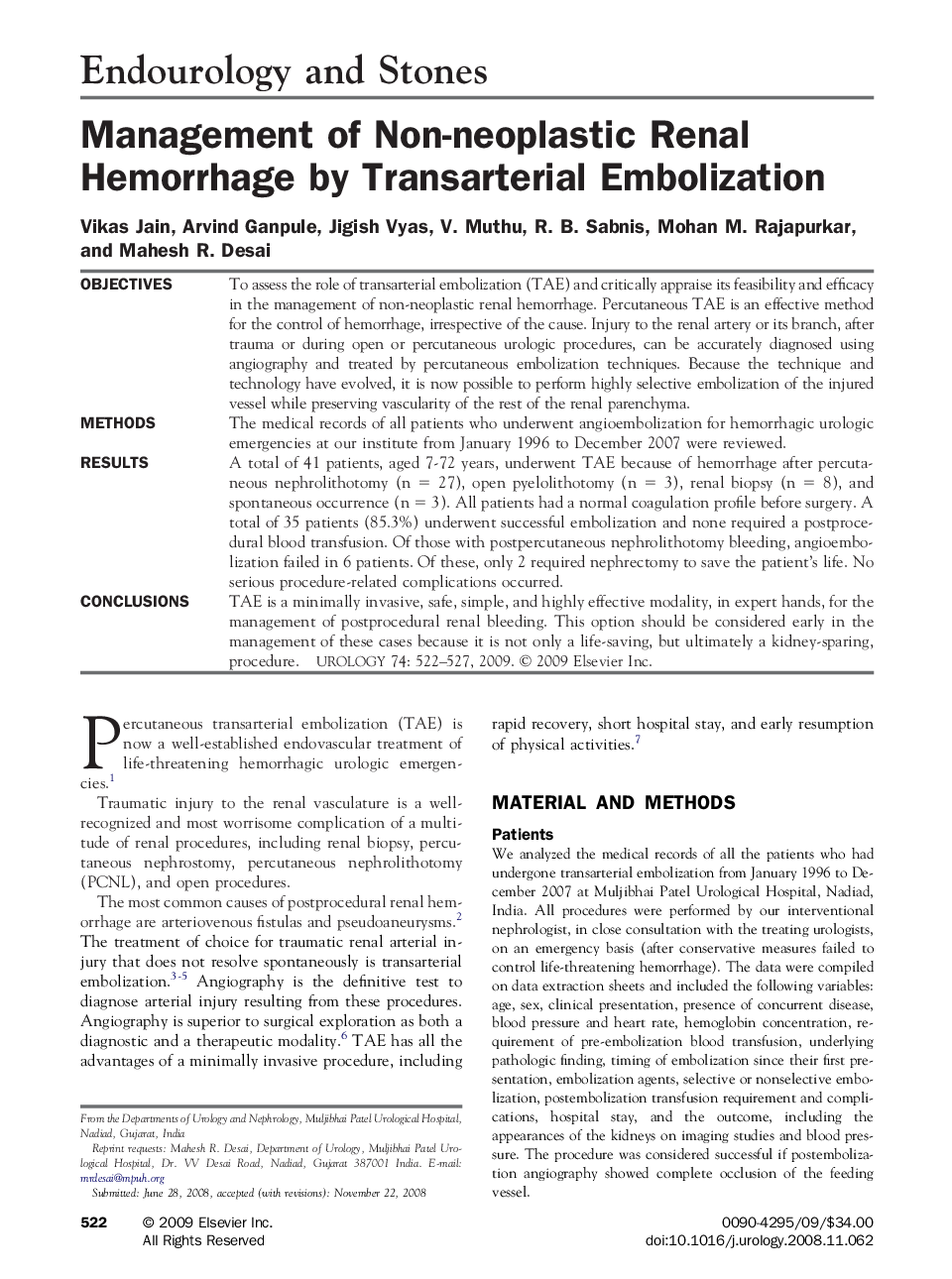| Article ID | Journal | Published Year | Pages | File Type |
|---|---|---|---|---|
| 3904035 | Urology | 2009 | 5 Pages |
ObjectivesTo assess the role of transarterial embolization (TAE) and critically appraise its feasibility and efficacy in the management of non-neoplastic renal hemorrhage. Percutaneous TAE is an effective method for the control of hemorrhage, irrespective of the cause. Injury to the renal artery or its branch, after trauma or during open or percutaneous urologic procedures, can be accurately diagnosed using angiography and treated by percutaneous embolization techniques. Because the technique and technology have evolved, it is now possible to perform highly selective embolization of the injured vessel while preserving vascularity of the rest of the renal parenchyma.MethodsThe medical records of all patients who underwent angioembolization for hemorrhagic urologic emergencies at our institute from January 1996 to December 2007 were reviewed.ResultsA total of 41 patients, aged 7-72 years, underwent TAE because of hemorrhage after percutaneous nephrolithotomy (n = 27), open pyelolithotomy (n = 3), renal biopsy (n = 8), and spontaneous occurrence (n = 3). All patients had a normal coagulation profile before surgery. A total of 35 patients (85.3%) underwent successful embolization and none required a postprocedural blood transfusion. Of those with postpercutaneous nephrolithotomy bleeding, angioembolization failed in 6 patients. Of these, only 2 required nephrectomy to save the patient's life. No serious procedure-related complications occurred.ConclusionsTAE is a minimally invasive, safe, simple, and highly effective modality, in expert hands, for the management of postprocedural renal bleeding. This option should be considered early in the management of these cases because it is not only a life-saving, but ultimately a kidney-sparing, procedure.
